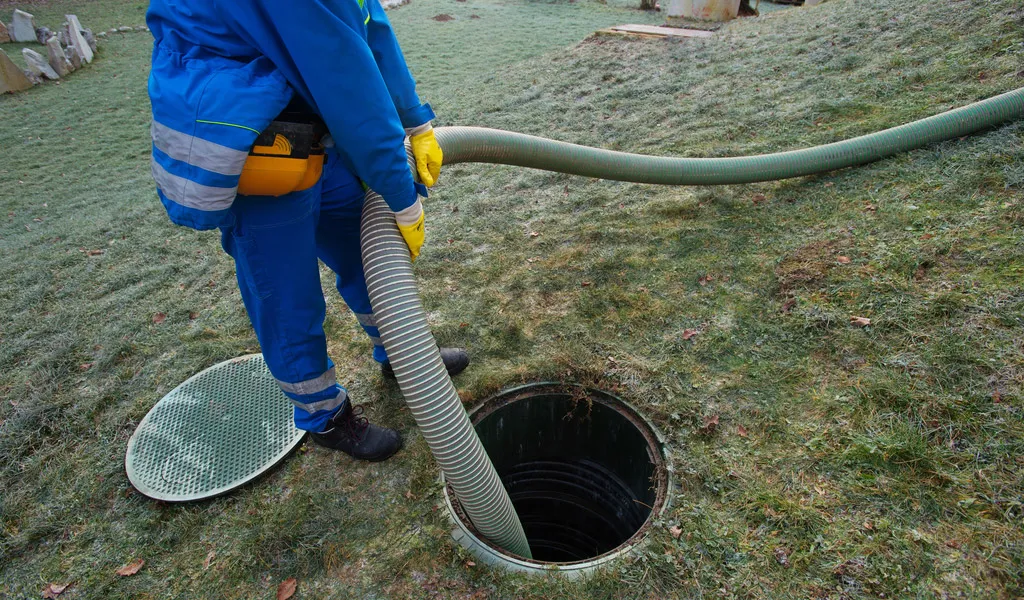
Septic systems play a vital role in managing wastewater for homes that are not connected to municipal sewage systems. Proper maintenance of your septic tank is essential to ensure it operates efficiently and prevents costly issues. In this comprehensive guide, we will explore the ins and outs of septic tank pumping and maintenance, helping homeowners understand the importance of these tasks and how to keep their septic systems in top condition.
Understanding the Septic System
Before delving into maintenance and pumping, let’s begin by understanding how a septic system works. A typical septic system consists of three main components:
- Septic Tank: This underground tank collects and holds wastewater from your home. Inside the tank, solids settle to the bottom, forming a layer of sludge, while lighter materials like grease float to the top, creating a scum layer. Bacteria in the tank break down organic matter.
- Drainfield: The drainfield, also known as a leach field, disperses treated effluent from the septic tank into the soil. This effluent undergoes further purification as it percolates through the ground.
- Soil: The soil in the drainfield acts as a natural filter, removing harmful bacteria and impurities from the effluent before it re-enters the groundwater.
Importance of Septic Tank Maintenance
Proper maintenance of your septic system is crucial for several reasons:
- Preventing Clogs and Blockages: Regular maintenance, including pumping, helps prevent the buildup of solids and sludge in the septic tank. Without maintenance, clogs and blockages can occur, leading to backups and sewage leaks.
- Extending System Lifespan: Routine maintenance can significantly extend the lifespan of your septic system. Neglected systems are more likely to fail, requiring costly repairs or replacement.
- Protecting the Environment: A well-maintained septic system ensures that wastewater is treated and purified before re-entering the environment. This helps protect groundwater and surface water from contamination.
- Maintaining Property Value: A functioning septic system is essential for the value and saleability of your property. A well-maintained system provides peace of mind to potential buyers.
Septic Tank Pumping: When and How Often?
One of the key aspects of septic tank maintenance is pumping. Septic tank pumping involves removing the accumulated sludge and scum from the tank. The frequency of pumping depends on various factors, including:
- Tank Size: The size of your septic tank determines how much wastewater it can hold. Larger tanks require less frequent pumping, while smaller tanks need more frequent attention.
- Household Size: The number of people living in your home directly affects wastewater production. A larger household generates more wastewater and may require more frequent pumping.
- Water Usage: High water usage, such as frequent laundry, long showers, or running a dishwasher often, can lead to more frequent pumping needs.
As a general guideline, septic tanks should be pumped every 3 to 5 years. However, it’s essential to monitor your system and consult a professional to determine the optimal pumping schedule based on your specific circumstances.
Signs Your Septic Tank Needs Pumping
While following a regular pumping schedule is important, it’s equally crucial to recognize the signs that your septic tank may need immediate attention. Look out for these indicators:
- Slow Drains: If you notice slow drainage in sinks, showers, or toilets, it may indicate that your septic tank is nearing its capacity.
- Foul Odors: Persistent foul odors around the septic tank or drainfield area can be a sign of excess sludge or a malfunctioning system.
- Backups: The most alarming sign is sewage backups in your home. When wastewater backs up into sinks, toilets, or showers, it’s a clear indication that your septic system is overwhelmed.
- Standing Water: If you observe standing water or soggy areas around the septic tank or drainfield, it may signal a leak or system failure.
Septic Tank Pumping Process
When it’s time for septic tank pumping, it’s best to hire a professional septic service company to handle the task. Here’s an overview of the pumping process:
- Inspection: The technician will begin by inspecting the septic system to assess its condition and locate the tank’s access points.
- Access Opening: The access port or manhole cover on the septic tank is opened to provide access to the tank’s interior.
- Pumping: Specialized equipment, such as a vacuum truck, is used to remove the sludge and scum from the tank. The entire contents of the tank are pumped out, leaving it empty.
- Inspection and Cleaning: After pumping, the technician may inspect the tank for any damage or signs of deterioration. In some cases, they may clean the tank’s interior to remove residual sludge and scum buildup.
- Lid Closure: The access opening is securely closed to prevent unauthorized access and ensure safety.
- Disposal: The pumped-out waste is transported to a licensed wastewater treatment facility for proper disposal and treatment.
Septic Tank Maintenance Tips
In addition to regular pumping, here are some maintenance tips to keep your septic system in excellent condition:
- Be Mindful of What You Flush: Avoid flushing non-biodegradable items, chemicals, grease, and excessive solids down the drains. These can clog your septic system.
- Conserve Water: Install water-saving fixtures and appliances to reduce water usage. Repair any leaks promptly to prevent excess water from entering the system.
- Avoid Heavy Traffic: Keep heavy vehicles, such as construction equipment or RVs, off the drainfield area to prevent damage to the pipes and soil.
- Regular Inspections: Schedule periodic septic system inspections to catch and address potential issues before they become costly problems.
- Educate Your Family: Ensure that everyone in your household knows what can and cannot be flushed or poured down the drains.
Conclusion
Maintaining a septic system is a responsibility that should not be taken lightly by homeowners. Regular septic tank pumping and maintenance are essential to prevent backups, protect the environment, and extend the life of your system. By understanding how septic systems work, recognizing the signs of a full tank, and following a maintenance schedule, you can ensure that your septic system operates efficiently and provides reliable wastewater treatment for your home. Remember that a well-maintained septic system not only protects your property but also contributes to a healthier environment for all.
Related posts:

Categories
- Apps (1)
- Automotive (23)
- Beauty (7)
- Business (118)
- Celebrities (2)
- Digital Marketing (21)
- Ecommerce (1)
- Education (18)
- Entertainment (25)
- Events (6)
- Features (4)
- Fitness (10)
- Food (2)
- Forex & Crypto (21)
- General (105)
- Health (48)
- House (61)
- Lifestyle (48)
- Marketing (8)
- Parenting (3)
- Pets (10)
- Real Estate (7)
- Safety and Security (11)
- Social Media (20)
- Sports (104)
- Technology (67)
- Travel (22)



















